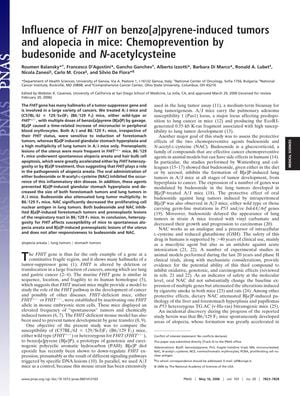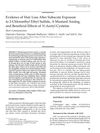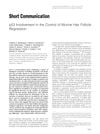Influence of FHIT on Benzo[a]pyrene-Induced Tumors and Alopecia in Mice: Chemoprevention by Budesonide and N-Acetylcysteine

TLDR Budesonide and N-acetylcysteine reduced tumors and alopecia in mice, regardless of FHIT gene status.
The study investigated the role of the FHIT gene in cancer and alopecia using A/J and B6/129 F1 mice treated with benzo[a]pyrene (B[a]P). Both mouse strains developed forestomach tumors, but only A/J mice showed glandular stomach hyperplasia and high lung tumor multiplicity. FHIT+/- mice had more preneoplastic uterine lesions. B6/129 F1 mice experienced accelerated alopecia areata and hair bulb cell apoptosis due to FHIT heterozygosity or B[a]P treatment, indicating FHIT's role in alopecia areata. Budesonide and N-acetyl-L-cysteine (NAC) effectively inhibited alopecia, glandular stomach hyperplasia, and reduced tumor sizes. FHIT heterozygosity influenced susceptibility to alopecia and preneoplastic lesions but did not affect the response to budesonide and NAC.


